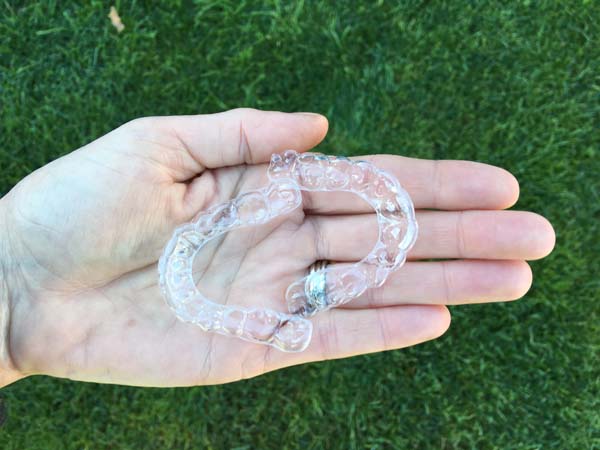The Differences Between Invisalign and Invisible Braces

Invisible braces and Invisalign aligners are two options people use to fix problems with their teeth. Since both allow people to fix teeth discreetly, they are often confused with each other. To help clear up the confusion, we will take a look at both orthodontic devices and highlight the differences between them.
What are clear braces and Invisalign aligners?
While both clear braces and Invisalign aligners offer a more discreet solution than traditional metal braces, they are quite different from each other.
Clear braces
These are also known as invisible braces because the brackets are made from a ceramic material that can be color matched to the teeth, making them difficult to notice at a distance. However, these are essentially the same as metal braces in structure because the brackets are bonded to the surface of the teeth and are connected by wires that are tightened to guide the teeth into the desired position.
Invisalign aligners
These are clear plastic aligners that are also effective in fixing problems with the teeth and bite, but they are more discrete than clear braces because the clear plastic is fitted over the teeth like a glove, making them very difficult to notice. However, these are not as effective in fixing severe problems with teeth, which is something clear braces are effective in doing.
What are their differences?
Like metal braces, clear braces are fixed in the mouth with brackets and wires that connect and hold them in place, which means only an orthodontist can remove them. Invisalign aligners are removable, which means they can be taken off when the patient wants to eat or brush their teeth.
Invisalign aligners are customized to fit perfectly in the mouth and dentists will provide patients with a tray of aligners to take home with them. The aligners have to be replaced every one to two weeks or as directed by the dentist and should be discarded after two weeks to be replaced by the next aligner in the tray. Clear braces have to be adjusted at least once a month to keep the pressure on the teeth to move into place gradually.
It is more difficult to clean clear braces because food particles get stuck in them while eating and are difficult to get out of the brackets. Invisalign aligners are much easier to clean because all a patient has to do is remove the aligner from their mouth and wash it with soap and water before putting it back in their mouth.
The brackets and wires used on clear braces cause a lot of discomfort, especially if one of the wires comes loose and scrapes the inside of the mouth in the process. Clear aligners are more comfortable because they are made from plastic and do not scrape the inside of the mouth when placed on.
Clear braces are not very durable because they are made from ceramic, which means the patient will likely make a few trips to the orthodontist to get them fixed during treatment. Clear aligners are more durable but are also easy to lose since they are removable.
Conclusion
Invisible braces and Invisalign aligners provide some of the same functions though they are two completely different orthodontic devices that each have their advantages and disadvantages. If you want to fix your teeth and are not sure which one to use, talk to your dentist to determine which option is right for you.
Request an appointment here: https://www.mytotaldentistry.com or call McCarthy Dentistry at (740) 546-5178 for an appointment in our Marietta office.
Check out what others are saying about our services on Yelp: Read our Yelp reviews.
Recent Posts
An Invisalign dentist offers patients a clear, step-by-step treatment plan that transforms smiles while maintaining comfort and convenience. This orthodontic option uses a series of custom aligners to gradually shift teeth into ideal positions, with progress monitored at regular intervals. Understanding the treatment process month by month helps patients prepare for each stage and stay…
Over the years, tooth extraction has become more seamless than it once was. Many advancements have been made, which make the procedure more comfortable and less painful. However, it still helps to know what to expect so you can prepare.Getting a tooth extracted is not as scary as most think. In fact, most extractions only…
Tooth extraction is one of the most common procedures in dentistry. This article discusses extraction aftercare guidelines to follow to achieve optimal recovery. Complications after a tooth extraction are rare but possible. The common ones include bleeding, dry sockets, and infection. Post-operative care is important to avoid these complications.The body starts healing immediately after the…
Many conditions can result in a tooth extraction, all of which boil down to the state of the tooth. There are two main types: simple and surgical. Take a closer look at each option and why we may recommend them.The goal of any general dentist is to preserve the natural teeth for as long as…


